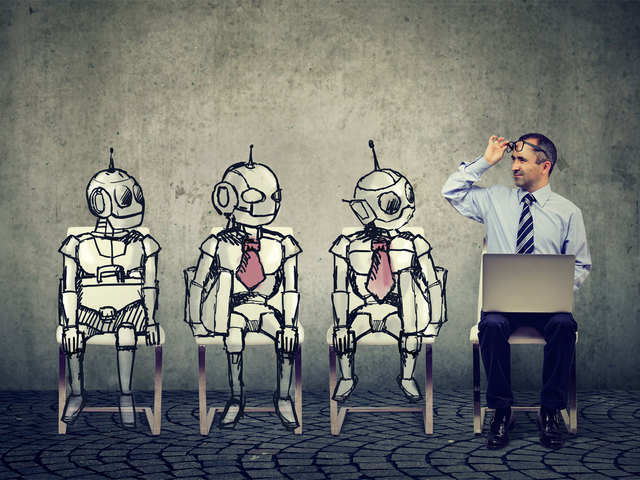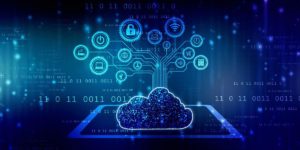It is a well-known truth that Artificial Intelligence and robots have gained massive global collaboration for various reasons. The rise in popularity and demand for robotics has made life much easier. However, as robots take overall employment in the industrial sector, an overly worried antipathy towards humans develops. Robots increase productivity while decreasing employment chances. Robots have already taken over all blue-collar jobs, and robots are now making their way into white-collar employment as well. As a result, jobs in all sectors will be jeopardized. Artificial companions, such as robots, can conduct low-paying hard jobs during off-peak hours, providing people a great deal of comfort. Let us explore the applications of robots in different industries and the benefits as follows:
Impact on different industries:
Whether small or large, Robots have entered almost every field of industry. We will discuss their impact in some major industries below:
1 Public safety
Artificial intelligence for predicting and detecting crime may look difficult now, but it’s a distinct possibility in the future. For instance, Drone will make this possible very soon. Furthermore, with AI digital assistants, automatic detection of suspicious activity is now a reality. This technology will significantly impact society since it will enable concerned personnel to act quickly whenever suspicious activity is detected.
2. Education
The distinction between classrooms and individual learning environments is already fading. Many education scholars advocate that a single teacher cannot address the needs of individualized learning for every kid in the classroom. Computer-based learning doesn’t take the place of a teacher, but it does allow pupils to work at their own pace. Robots will aid the process of tailored learning. The humanoid robots have already formed relationships with kids from all across the world. It includes crucial natural interaction senses such as hearing, moving, connecting, and speaking.
3. Workplace
Robots may work at any time of day or night. They don’t require breaks or medical coverage. They have no confrontations with their supervisors or coworkers, and they don’t take personal time to deal with their issues. Employers would welcome a workforce made entirely of intelligent robots, while employees are concerned about the impact of a robotics-based workforce on employment.
There are two sides to the coin in implementing the robotics-integrated workforce, as with any breakthrough technology. It may replace humans in jobs where tasks are repetitive. For example, in preparing reports, software testing. So, it can impact negatively by increasing unemployment. On the other hand, robots can be employed in dangerous environments where it is risky to work for humans. In that case, they can leave a positive impact also.
4. At-home robots
Home robots are now a part of our daily life. These cloud-connected robots can be programmed to do chores for us. For example, the vacuum cleaner can do cleaning, and we can get a warm home-cooked lunch when we return from work. Multi-function robotic cookers can fry, steam, bake, slow cook, and do various other tasks without our help. We anticipate witnessing increased voice comprehension and human relationships in the coming years, and these developments can potentially transform the look and feel of our houses completely.
5. Coworkers
Robots can fill many roles inside an organization. Therefore it’s time for us to consider how we’ll engage with our new colleagues. Voice recognition is likely to improve in the future, so we’ll be using voice commands to communicate with the machines.
6. Agriculture
Agriculture is one of the areas that the usage of robots has substantially impacted artificial intelligence, which may come as a surprise. They are more efficient than human labor in harvesting and spraying crops for weeds and pests. These machines and drones monitor crop and soil conditions, analyze the impact of weather and other environmental factors on plants, and predict outcomes using computer vision, machine learning models, or AI algorithms.
7. Healthcare
Modern technology, such as robotics and artificial intelligence, helps advance digital health and improve medical care. Surgeons’ aides have become irreplaceable as they reduce invasiveness & give greater precision during surgeries, reducing patient recovery time. Chatbots and consulting apps powered by artificial intelligence (AI) make telemedicine more accessible.
Also read:- Commercial Property Management Company
Other intelligent systems can analyze patients’ medical records and other data, such as data from medical wearables, to perform exact diagnosis. Because of their ability to make medical services more precise and available, intelligent software and machines have immense potential in healthcare.
Benefits:
Let us discuss the common advantages of robots:
- Productivity has been increased:
Robotic machinery can be programmed to run at a steady, optimal speed with no pauses. As a result, automated machines can produce more in less time than human labor. Remote management allows for quick configuration and problem resolution. Furthermore, the automated equipment is highly configurable and can easily move between duties, resulting in increased production efficiency.
- Quality has improved:
Intelligent machines eliminate human error and give near-perfect precision, resulting in higher output quality. As a result, consumer satisfaction improves because defective products are less likely to reach end customers.
Also read:- write for us tech
Also read:- Technology write for us
Also read:- write for us technology blogs
- Cost savings:
Factory owners save money on labor costs when one robot can replace dozens of workers. The initial costs are countered by a speedy return on investment (ROI) that can be realized in as little as two years. This is made possible by greater productivity and throughput speed. Robots can function in low-light environments and do not require climate control, which reduces utility costs.
- Safety:
Many manufacturing professions entail more physical risk and work in hazardous environments. In dangerous workplaces, intelligent machines can take the role of people, reducing occupational injuries and their negative impact on workers’ health. High-risk industries, such as mining or fertilizer production rely on robots to prevent accidents and ensure worker safety.
Conclusion:
Although the impact on people has been discussed, we can only speculate on the exact magnitude. We can’t forecast where future robotics will take us, just as we can’t predict the influence of the internet. It’s possible, though! As we progress along the Robotics Revolution’s path, we will look back on this decade as the one in which robotics truly took off, laying the groundwork for our future world.
Author bio:
Hello, I am a professional SEO Expert & Write for us Technology blog and submit a guest posts on different platforms- we provides a good opportunity for content writers to submit guest posts on our website. We frequently highlight and tend to showcase guests.



